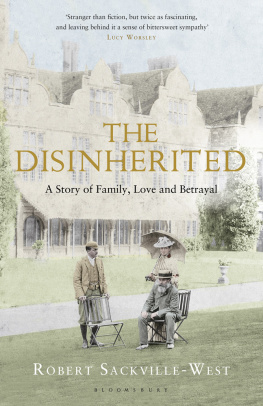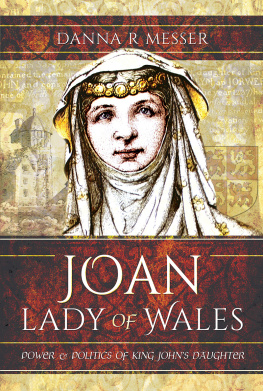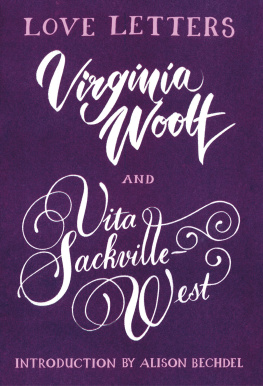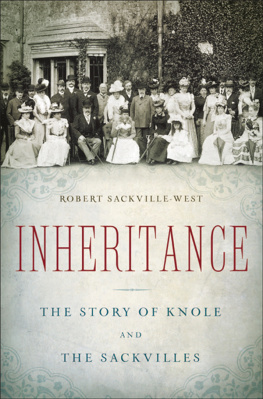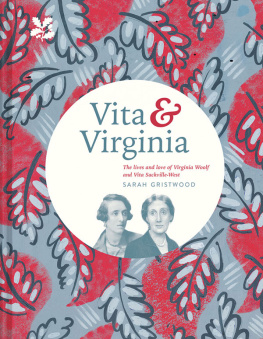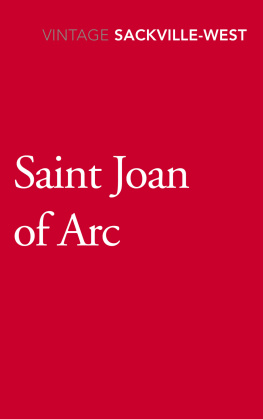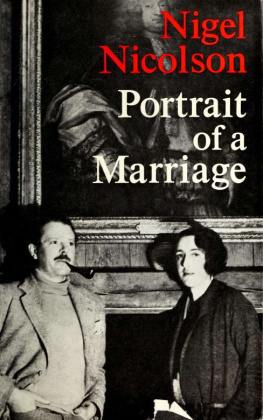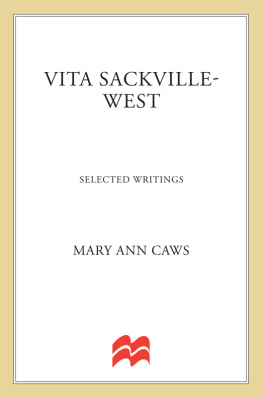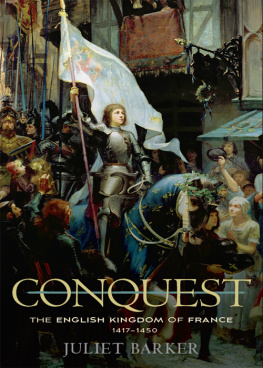Just as I was beginning to research this book, in March 2011, I received a letter from Vayle Wolstenholme, a South African now living in Australia. She was hoping to carry out a promise made to her late mother: to hand back to Knole, and a member of the Sackville family, a couple of letters written to her mothers grandfather, Max, in South Africa a century before. As a young woman, her mother had noticed an important-looking envelope, with a red wax seal, amongst the pile of papers being consigned to a bonfire during a clear-out of the family home. She had no idea how much was incinerated that day furniture, as well as old papers but she suspected that these two letters would mean a lot to an historian of Knole and the Sackvilles in the future.
Her suspicions were correct. The letters she had plucked from the fire (and goodness knows how much else went up in flames) referred to a series of events that took place at the turn of the nineteenth and twentieth centuries, and were the subject of the book I was writing. They were both addressed to Max Sackville West: one was from his brother-in-law, my great-uncle Lionel, and the other was from his sister, Amalia.
I entered into a correspondence with Vayle, which resulted in her coming to Knole with the letters, to fulfil the promise she had made to her mother. Throughout her life, Vayle had heard stories about her great-grandfather, Max, and the disputed succession to a stately home in Kent. In the 1930s, Vayles mother, Daphne, and grandmother, Vivian, had visited England and had had lunch at Sissinghurst with Vivians first cousin, Vita Sackville-West, and her husband Harold Nicolson. Vita had been shocked when she was shown a photograph of her uncle Max in South Africa not simply because he was by now an old man, but because he was the spitting image, or so she claimed, of her grandfather, Lionel, the 2nd Lord Sackville.
As an illegitimate child, and a potential source of embarrassment to the family, Max had been packed off to South Africa by his father, Lionel, in the 1870s. Vayle was as intrigued as I was by his story. She quizzed members of her family, and spent hours in the afternoon heat of Pietermaritzburg, scrabbling about on her hands and knees, searching for the grave of Max (who died in 1936). She located the last remaining person in South Africa to bear the surname Sackville West: an elderly woman, Lea, living in a nursing home in Johannesburg.
Vayle was occasionally dismayed by the behaviour of her antecedents, and fearful of re-opening old family wounds or causing new ones. For the fault-lines ran not just between the legitimate and the illegitimate branches of the family, but also within those branches themselves. Why had no family member, Lea wondered, attempted to track down her late husband, Cecil, one of Maxs grandsons, during his lifetime? Why had he been disowned and abandoned by his uncles, aunts and cousins? Why was it that, among Maxs descendants, Vayles side of the family had had so little to do with Cecils? These were just some of the questions Vayle wished she had asked her parents.
I am, as a result, indebted to Vayle, Lionel and Pepitas great-great-granddaughter on the illegitimate side, for all her researches; just as I am to Adam Nicolson and his sister, Juliet, Lionel and Pepitas great-great-grandchildren on the legitimate side, for all their help and friendship. They gave me complete access to the family papers at Sissinghurst, and to the trunks of letters, which their grandmother Vita had used to write Pepita , the starting point for this book. I thank them, too, for giving me permission to quote from the published works of Vita Sackville-West and Harold Nicolson. I am also grateful to the National Trust staff at Knole and Sissinghurst for their expertise and willingness always to answer a question or supply a photograph.
My curiosity as to what became of Pepitas children began several years ago when I was writing Inheritance , the story of Knole and the Sackvilles, who have lived there for the past 400 years. But whereas Inheritance chronicled a fairly well-documented family there is, for example, a family tree at Knole that traces the Sackville lineage back to the early Middle Ages The Disinherited tracks down figures far more fugitive, people who left just wisps of themselves behind. The evidence consists not of heirlooms those portraits and objects, freighted with emotional and historical associations that are a feature of Inheritance but of certificates of birth, marriage, divorce and death, of censuses and court reports, newspaper accounts, diaries, and letters.
Some of these documents are to be found in the town halls of France, the staff of which have been unfailingly helpful in providing copies; others in magnificent repositories on the fringes of Paris and London: the Archives des Affaires trangres et europennes at the Centre de la Courneuve; the Service Historique de la Dfense at the Chateau de Vincennes; and the National Archives at Kew. The papers at Kew, on which much of this book is based, have survived as the result of a technicality. Because the family saga culminated in a court case in which a title that of Lord Sackville was at stake, the court reports were preserved with the records of the Treasury Solicitor at the National Archives. I have my friend Guy Philipps QC to thank for pointing me in that direction and for providing me, unwittingly, with the key that unlocked this story. He could not have prepared me, however, for the excitement of finding that it was not just the transcripts of the court proceedings that were preserved at Kew, but all the supporting depositions, too, and boxes containing dusty bundles of personal letters and photos. From suburban Kew, I was transported to the slums of Mlaga and the stately homes of England, the convent schools of Paris and the music halls of London, the South African veldt and the diplomatic world of late nineteenth-century Washington.
I am also grateful to the staffs of the London Library and the British Library, particularly the keepers of the newspaper archive at Colindale; to Christopher Whittick of the East Sussex Record Office in Lewes; and to the Lilly Library at Indiana University, Bloomington, where the diaries of the turbulent Victoria, Lady Sackville, found a peaceful, final resting place.
The internet has transformed research into the lives of those ordinary people, whose stories cannot be found on the shelves of libraries, but who can be traced, for example, on the General Register Office site (for records of births, marriages and deaths); on Gallica, the digital library of the Bibliothque Nationale de France, for access to over a hundred years of French newspapers; and on any number of genealogical sites.
After all these virtual encounters, it has been a great pleasure to meet and correspond with real people. Franoise Cottin stayed in the Villa Pepa for a month in the summer of 1963, sleeping in Pepitas room as she cared for a convalescent son. The villa had been in her husbands family since 1876, and the interior, including some of the furniture, had barely changed since Pepitas day. Franoises husband had grown up in the Cottin family house in the Rue de Monceau in Paris, and as young boy attended the Cours St Louis at No. 17, on the site of the convent school where Pepitas daughter, Victoria, had been sent to board. The Cottins subsequently lived for fifty years in the Rue de Monceau. No wonder that Mme Cottin, having followed so literally in the footsteps of the family, felt such an affinity for Pepita. She has been a great source of information on life in Arcachon and Paris in the 1860s and 1870s.
The Sisters of St Joseph in Lyons shared with me the few surviving archives of the convent in the Rue de Monceau. Brigitte Petit Archambault went far beyond what could be expected from a friend even one of my oldest friends in chasing arcane requests for information from France. Jesus Rivera-Rosado, a Spanish balletomane, helped me acquire some letters of Floras written over a hundred years ago; and Maxine Park returned some of Amalias that had gone astray. Dr Judith Beniston, a lecturer in German at the University College of London and an authority on the history of German and Austrian theatre, gave me fascinating insights into Pepitas professional career. The Mooi River Farmers Association in South Africa helped me to understand the world into which Max was dispatched; and Jenny Duckworth conducted research for me at the Pietermaritzburg Archives Repository.
Next page
